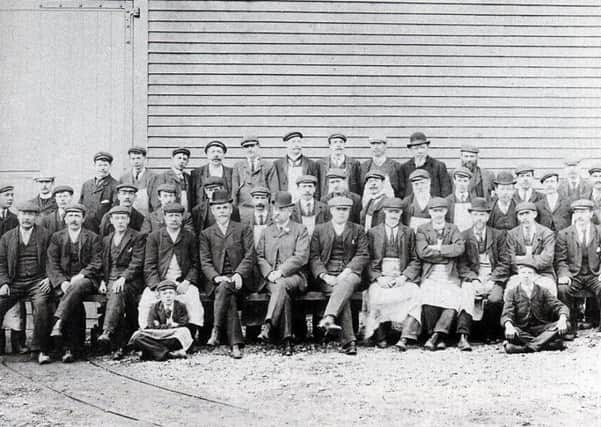Samuelson memories


This took the form of a series of reminiscences about the Britannia Works owned by Sir Bernard Samuelson, which were situated on two separate sites linked by a tramway with a depot adjacent to the GWR station.
Joe went into the works from school during the early years of the 20th century.
Advertisement
Hide AdAdvertisement
Hide AdHe was employed in the blower fitting department where the foreman was his father Harry Herbert.
Letter headings about that time identify a diversity of products made by this company of engineers and machinists.
These included Roots ‘Acme’ blowers and exhausts, flour milling machinery, Samuelson’s patent power hammers, foundry moulding machinery, and harvesting machinery.
Until about 1912 there was a big emphasis on agricultural items such as reaper binders but this situation changed when on a night before Banbury Fair the carpenter’s shop was burnt down.
Advertisement
Hide AdAdvertisement
Hide AdThe result was that a consignment of flour milling machinery was lost in the flames.
Britannia Works’ products were shown at numerous leading events at home and abroad.
Probably their first involvement was with the Great Exhibition of 1851 at the Crystal Palace.
Their display reflected the early emphasis on items such as turnip cutters, chaff cutters, ploughs and horse hoes.
Advertisement
Hide AdAdvertisement
Hide AdIn Class 9 the firm secured a prize medal for a turnip cutter. By Joe’s time blowers were its world famous speciality.
The Britannia Works was not only famous for numerous products but renowned for its stable of horses kept in immaculate condition.
Their function was for haulage of trucks on the light railway that linked the upper and lower works and conveyed timber to extensive wood yards on the opposite side of the Oxford Canal.
Joe’s remarks about his working day and some of his colleagues are especially revealing.
Advertisement
Hide AdAdvertisement
Hide AdErnest Samuelson, the managing director, walked to the factory from his home at Bodicote Grange and always arrived just before 9am.
Frequently he was accompanied by his dog which he let loose at the Upper Works so that the animal could find its way to its kennel in the Lower Works .
A personality at the firm was Dick Stanley who got out of his bed every working day at 5.15am so that he could rouse his workmates in case they did not hear the 5.30am hooter.
Work started at 6am and ended at 5.30pm (noon on Saturdays). Apparently the hooter was so loud that it could be heard as far away as Middleton Cheney.
Advertisement
Hide AdAdvertisement
Hide AdMany employees lived in villages and of necessity became good walkers.
Not only did they go to work on foot but when Banbury Fair was on put in an extra journey to and from home in order to enjoy the sideshows.
It was just such an occasion when one of Joe’s colleagues called ‘jerky Adkins’ slipped off a fair hobbyhorse necessitating the roundabout to be part dismantled in order to free him.
Nicknames were common at the works. These included ‘Knacker’ Bedlow, ‘Foxy’ Fairfax and ‘Stodger’ Jones.
Advertisement
Hide AdAdvertisement
Hide AdMany of the workers were involved in the considerable number of sports activities on offer.
The firm’s Recreation Society catered for football, cricket, tennis, shooting, quiots and skittles.
There was a large sports field by the railway where the pavilion sported a full licence and the grandstand was thatched.
The works also had a good brass under the direction of Harry Webb, a foreman blacksmith.
Advertisement
Hide AdAdvertisement
Hide AdTurning to cricket, Joe recalled a remarkable occasion when during a Whit Monday game the employee who was batting clouted the ball beyond the boundary so that it fell into a truck of a passing coal train.
Railwaymen 23 miles away at Leamington Spa found and returned the ball.
Joe concluded the interview by stressing how much Banbury as a town owed to this company.
Sir Bernard Samuelson was a remarkable benefactor and his money helped underpin the Municipal Buildings and Library as well as Britannia Road School.